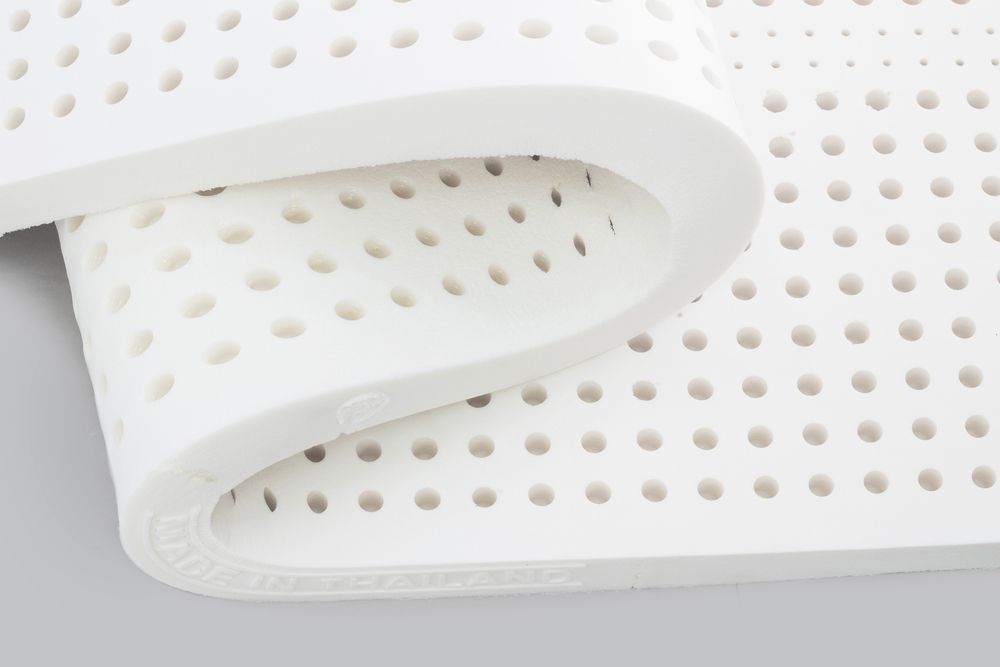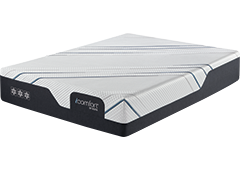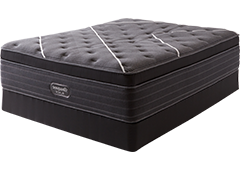
Memory Foam vs Natural Latex Mattress: Which Is Best?
Navigating the memory foam vs. natural latex debate for your mattress can be a daunting task, given the multitude of advantages each offers in terms of comfort and health. Misinformation from enthusiastic salespeople and conflicting claims from manufacturers only add to the confusion. In this article, we aim to dispel misconceptions surrounding both memory foam and natural latex mattresses, empowering you to make an informed decision tailored to your needs.
Choosing the right mattress for your bedroom is a decision that shouldn’t be taken lightly. It requires a thoughtful consideration of the benefits each type provides and an assessment of their impact on your sleep quality and overall health. While cost is a factor, it should not overshadow the significance of your well-being.
Both memory foam and natural latex mattresses enjoy popularity in the market, making the decision-making process even more challenging. Relying on the choice of a friend may not be sufficient, as individual preferences and needs vary. In this comprehensive article, we’ve compiled vital factors to help you navigate the memory foam vs. natural latex mattress dilemma.
Exploring the similarities and differences between these mattress options is crucial for making an informed decision. From understanding the distinct advantages each offers to considering the cost implications, we provide insights that will guide you towards selecting the mattress that aligns with your unique requirements. Keep reading to gain clarity on whether a memory foam or natural latex mattress is the right choice for you.
Memory Foam vs Natural Latex Mattress
Memory Foam Mattress
In the 1960s, NASA pioneered the development of memory foam, originally designed to enhance astronaut comfort during rocket launches and potential crashes. While its space-age origins are fascinating, memory foam quickly transitioned into everyday life. Composed of polyurethane blended with specific chemicals, memory foam boasts exceptional density and absorption qualities, molding itself precisely to the contours of your body. Notably, it retains the shape for a longer duration, gradually returning to its original form after you rise from the bed. This revolutionary material has since become a staple in various applications, offering unparalleled comfort and support in our daily lives.
Natural Latex Mattress
True to its name, a natural latex mattress is crafted predominantly from organic materials. Sourced from rubber trees, the latex used is in its purest form. Following a stringent standard, a natural latex mattress typically comprises a minimum of 95% natural latex, with a minimal 5% allowance for other chemicals. If you prioritize an all-natural sleeping experience, this mattress is the ideal choice for you. Embrace the purity and comfort of a mattress crafted from nature’s own resources.
Related Article: What To Look Out For in A Memory Foam Mattress
Which is The Best Mattress for You?
Here a few factors that you should consider when deciding between memory foam and natural latex mattress.
Conformity
In the debate between memory foam and natural latex mattresses, the first key consideration is conformity—how well a mattress adjusts to the weight placed on it. This property marks a significant difference between the two.
Memory foam mattresses excel in conformity, thanks to their viscoelastic nature. They precisely mold to the unique shape of the person lying on them, offering a snug fit. If you value a bed that embraces your body contours seamlessly, a memory foam mattress is an excellent choice.
Conversely, natural latex mattresses exhibit a less intricate level of conformity. While they do respond to the weight applied, the impression is more generalized compared to memory foam. Opting for a natural latex mattress is a preference for those who seek a more solid and uniform feel in their sleeping surface.
Understanding the nuances of conformity between memory foam and natural latex is crucial for making an informed decision about the mattress that aligns best with your comfort preferences. Whether you prioritize the personalized embrace of memory foam or the sturdier feel of natural latex, this comparison sets the stage for selecting the ideal mattress for your needs.
Support
The support rating of a mattress, gauged by its ability to maintain an even and sag-free surface, is a crucial factor in choosing the right bed. Both memory foam and natural latex mattresses demonstrate commendable support, yet nuances exist between the two.
Natural latex, known for its heightened responsiveness, excels in resisting sinking and indentations. Its durability makes it less prone to sagging over time, appealing to those seeking prolonged support. This attribute positions natural latex as a favored choice for individuals prioritizing robust support in their mattresses.
Conversely, memory foam offers substantial support by conforming to the body’s shape. Its capacity to cradle the natural curve of the spine ensures consistent support regardless of sleep position. While memory foam is often lauded for lumbar support, some argue that natural latex surpasses it in this aspect.
In summary, the support qualities of memory foam and natural latex mattresses cater to different preferences. Whether you prioritize the responsiveness and durability of natural latex or the contouring support of memory foam, understanding these distinctions is essential for selecting the mattress that best meets your unique comfort and support needs.
Motion Isolation
The motion isolation performance of a mattress is a crucial consideration, especially for individuals who share a bed. Both memory foam and natural latex mattresses offer notable advantages in this regard, yet there are nuanced differences.
Memory Foam:
Memory foam excels at motion isolation, making it a popular choice for couples. The viscoelastic properties of memory foam allow it to absorb and dampen movement. When one person moves on the bed, the surrounding areas are less likely to experience disturbance. This attribute is particularly beneficial for minimizing disruptions caused by a partner getting in or out of bed or changing positions during sleep.
Natural Latex:
While natural latex also provides good motion isolation, it may not match the level of responsiveness found in memory foam. Latex tends to have a more buoyant quality, meaning it can transmit a bit more motion compared to memory foam. However, the motion transfer on natural latex mattresses is generally minimal, and many latex mattresses incorporate design features to enhance motion isolation.
In summary, both memory foam and natural latex mattresses are effective at minimizing motion transfer, contributing to a more undisturbed sleep experience. The choice between the two depends on personal preferences and considerations such as firmness, support, and other factors beyond motion isolation.
Temperature control
Temperature regulation is a significant factor for sleep comfort, and both memory foam and natural latex mattresses address this aspect differently:
Memory Foam:
- Heat Retention: Traditional memory foam has been criticized for its heat-retaining properties. The dense structure of memory foam tends to trap body heat, potentially causing discomfort for some sleepers.
- Ventilated Options: To counteract heat retention, many modern memory foam mattresses feature designs with open-cell structures or incorporate cooling gel infusions. These improvements aim to enhance breathability and dissipate heat more effectively.
Natural Latex:
- Breathability: Natural latex tends to be more breathable than traditional memory foam. Its open-cell structure allows for better air circulation, helping to regulate temperature and prevent heat buildup.
- Temperature-Neutral: While natural latex is generally considered temperature-neutral, it doesn’t actively cool the way some advanced memory foam mattresses with cooling technologies do. It provides a more balanced temperature profile without the risk of overheating.
Considerations:
- Personal Sensitivity: Individual preferences and sensitivity to temperature play a crucial role. Some people may find memory foam mattresses with cooling features sufficient, while others may prefer the naturally breathable characteristics of latex.
- Mattress Covers: The type of mattress cover can also influence temperature regulation. Breathable and moisture-wicking covers can contribute to a cooler sleep environment.
Cost
The cost differences between memory foam and natural latex mattresses can vary based on several factors, including the quality of materials, manufacturing processes, and brand reputation. Here are some general considerations:
Memory Foam:
- Affordable Options: Memory foam mattresses often come in a range of price points, including budget-friendly options. Traditional memory foam tends to be more cost-effective compared to specialty foams.
- Varied Price Ranges: The cost can vary based on factors like foam density, thickness, and additional features such as cooling technologies or specialty foams.
- Discounts and Sales: Memory foam mattresses are commonly featured in sales and promotions, making them more accessible for budget-conscious shoppers.
Natural Latex:
- Higher Price Range: Natural latex mattresses are generally considered a premium option, and as such, they often come with a higher price tag.
- Durable Investment: While the upfront cost may be higher, natural latex mattresses are known for their durability. The long lifespan and resilience of natural latex can make it a cost-effective investment over time.
- Quality Matters: The price of a natural latex mattress can also be influenced by the percentage of natural latex used, with higher percentages usually correlating with a higher price.
Considerations:
- Budget Constraints: If budget constraints are a primary concern, memory foam mattresses may offer more affordable options without compromising quality.
- Long-Term Investment: For those viewing their mattress as a long-term investment and willing to make a higher initial investment, natural latex mattresses can provide durability and other benefits.
Final Take
We trust that we’ve provided clarity on the memory foam vs. natural latex debate, but ultimately, the choice comes down to your personal preferences.
Regardless of your decision, we are committed to offering top-notch quality mattresses. Explore our online mattress store for a curated selection of both memory foam and natural latex mattresses. Take your time to browse and find the perfect fit for your needs.
If you require additional assistance or have any questions, our team is ready to help. Feel free to reach out to us at (416) 781 7441 today! If you reside within the Greater Toronto Area, you can always visit our mattress store in Toronto. Your comfort is our priority, and we’re here to ensure you make an informed and satisfying mattress choice.

 Serta
Serta Simmons BeautyRest®
Simmons BeautyRest® Pocket Coil
Pocket Coil Memory Foam
Memory Foam Pillow-Top
Pillow-Top Dreamstar Mattresses
Dreamstar Mattresses Mattresses under $500
Mattresses under $500
